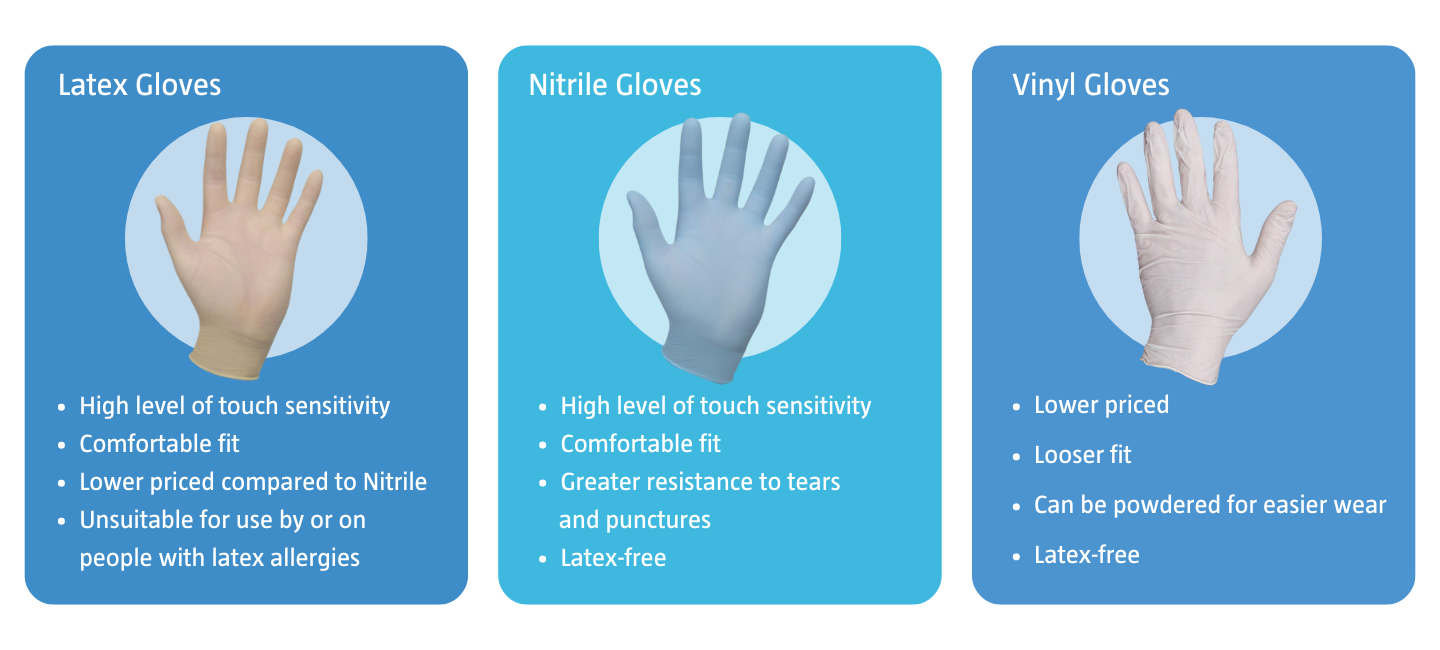Dental Glove Size Guide

Why Choosing Properly Sized Dental Gloves is Important
Choosing correctly sized dental gloves is essential for both safety and comfort during procedures.
If your gloves are too tight, they can restrict hand movement, cause discomfort, and increase the likelihood of tearing, compromising the protective barrier.
Tight gloves may also reduce tactile sensitivity, which is crucial in performing precise dental tasks.
Conversely, gloves that are too loose can interfere with dexterity, making it harder to handle instruments accurately. Loose gloves are also more prone to slipping off or causing cross-contamination.
Additionally, poorly fitting gloves may lead to hand fatigue during extended use, affecting the overall performance of the dental professional.
Ensuring you choose the correct glove size helps maintain a proper fit that allows for ease of movement, comfort, and reliable protection against contaminants and chemicals, all while ensuring you can perform your tasks effectively.
Which Type of Dental Gloves Should I Use?
When choosing the right type of surgical gloves, several factors should be considered to ensure safety, comfort, and effectiveness in clinical settings. The material of the gloves plays a key role.
Latex gloves, known for their excellent elasticity and tactile sensitivity, are a common choice for dental work but can cause allergic reactions in some individuals.
For those who are allergic to latex, nitrile gloves offer a durable, puncture-resistant alternative, though they may provide slightly less tactile sensitivity.
Vinyl gloves are another option; they are less expensive but offer lower durability and tactile feedback, making them more suitable for low-risk, short-term tasks.
Finding the Dental Gloves for You
Selecting the right dental gloves involves considering both the material and the proper sizing to ensure safety, comfort, and efficiency in clinical procedures.
Properly sized dental gloves, determined by measuring hand circumference and using a glove size chart, are essential for maintaining dexterity, tactile sensitivity, and protection against contamination.
Whether choosing latex, nitrile, vinyl, or another type of glove, the fit should allow for ease of movement without being too tight or too loose.
By paying attention to both material and size, you can ensure optimal performance and minimise the risk of discomfort, cross-contamination, or glove failure during procedures.
| Size Name | EU Size | Hand Circumference (cm) |
| XXS | 5 | 12.7-15.2 cm |
| XS | 6 | 15.2-17.8 cm |
| S | 7 | 17.8-20.3 cm |
| M | 8 | 20.3-22.9 cm |
| L | 9 | 22.9-25.4 cm |
| XL | 10 | 25.4-27.9 cm |
| XXL | 11 | 27.9-30.4 cm |
| XXXL | 12 | 30.4-32.9 cm |
Measuring your glove size is straightforward. Follow these steps:
- Measure the Circumference of Your Hand:
- Take a tape measure.
- Wrap it around the widest part of your dominant hand, just below the knuckles (excluding the thumb).
- Record this measurement in centimetres.
- Refer to a Glove Size Chart:
- Once you have your hand’s circumference, use a glove size chart to determine your size.
- Test the Fit:
- After selecting a size, try on the gloves.
- Extend your fingers straight to ensure a proper fit.
- If the glove stretches excessively or shows signs of tearing, it's too small.
By following these steps, you can accurately determine your glove size, ensuring both comfort and functionality.

